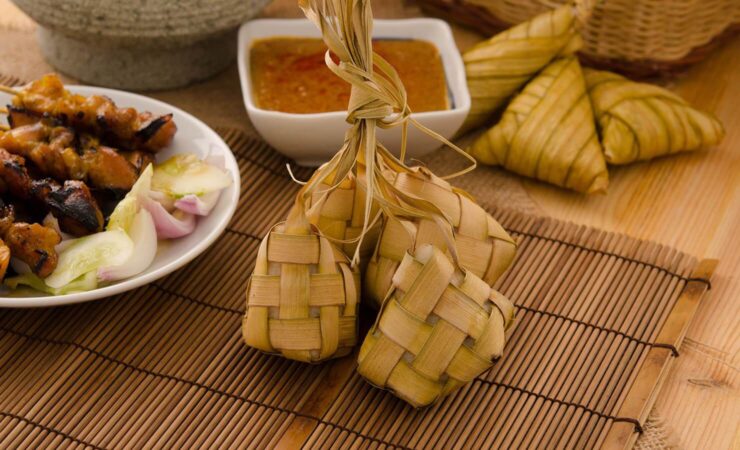Maryam Yusof of fashion community website HijabLook.com shares her deepest thoughts about Eid ul Fitr.
Unlike the homes of many Singaporean Malay families, you won’t find colorful twinkling lights decorating my family’s windows or bright green ketupat arrangements made of ribbons adorning our doorway in the days leading up to Hari Raya, what Eid is locally known as. Perhaps the only indication that we’re celebrating Hari Raya would be the spread of yummy cookies laid out neatly on our coffee table.
As a kid, the lack of fanfare and celebratory spirit in my family was never an issue. Raya was a magical time and I always looked forward to it. I would wake up for Subuh and feel like a badass for being able to eat after 5.30am, and put on the new clothes bought by my mother from the Geylang Bazaar. This was typically a baju kurung that matched in style (but rarely in color) with my sisters, though one year it was a ‘Vietnamese Dress’ that was very popular in the bazaar for some reason.
We would start the day by gathering with relatives at my grandparent’s house and ask for forgiveness from older relatives. My extended paternal family would then visit my father’s uncles and aunties across the country and we’d travel in separate cars. My cousins and I treated the journey to every house like a race, egging our fathers to dangerously overtaking each other and use shortcuts in order to be the first to reach the next destination.
Between stuffing my face with the most wonderful lontong and rendang dishes you could imagine, and the accumulation of green envelopes filled with money in my little handbag, I never wanted Hari Raya to end.

Between stuffing my face with the most wonderful lontong and rendang dishes you could imagine, and the accumulation of green envelopes filled with money in my little handbag, I never wanted Hari Raya to end. And the good thing was, Hari Raya lasted for a month. Back then, Hari Raya often coincided with the year-end school holidays and having a stay-at-home mum meant that we were constantly going out and visiting friends and relatives until the end of Shawal.
As I entered my teenage years though, the excitement became lost on me and Hari Raya meant little more than the end of Ramadan. Also, Hari Raya often coincided with my major examinations so I had the very little mood to celebrate anything and would look forward to getting home and burying myself in my books (I know, I was such a nerd).
One thing that I still looked forward to though was gathering with the family on the morning of Hari Raya. My extended family met fairly often, yet our gathering on Hari Raya was something of a highlight of the year. We’d laugh with the younger cousins while they played with sparklers (though according to them, these things are called ‘fireworks’) and photograph the entire family dressed in their best. Before moving on to visit other relatives, we’d have the customary forgiveness session that would drive everyone to tears — and I’d realize what was important on Hari Raya.
It wasn’t about being dressed in a unique outfit that you’d had tailormade three months in advance, or hanging up new curtains to match the new bedspread. But it was about family, and Hari Raya is a time for bonding. Ten years ago, it would take my family at least three days to visit the homes of all our relatives, but in the past few years, we’ve been able to visit most homes within a day now that many of our elders have passed on.

Yes, Hari Raya is about celebration — and it is also about appreciating those who are still with us. I didn’t use to see the importance of visiting our relatives only once a year. But now, I have found myself missing relatives that I barely knew on this special occasion.
We should treasure the family that we still have around us and use Hari Raya to strengthen our family ties, put aside any differences that we may have with one another, and forgive. Eid Mubarak and Selamat Hari Raya!
Glossary of Terms
- Hari Raya: What Malays from Singapore, Brunei and Malaysia call Eid. Hari Raya literally means ‘Day of Celebration’
- Ketupat: Rice boiled in a pouch of woven palm or coconut leaves
- Lontong: Ketupat ate in a savory veggie stew
- Rendang: Rich and savoury dry curry dish
- Geylang Bazaar: A staple Hari Raya bazaar that operates every Ramadhan at Geylang Serai in Singapore. You can find clothes for Hari Raya, hijabs, decorations, home accessories and lots of food here
- Baju Kurung: Traditional Malay outfit consisting of a matching long tunic and skirt for women or matching shirt and pants for men
